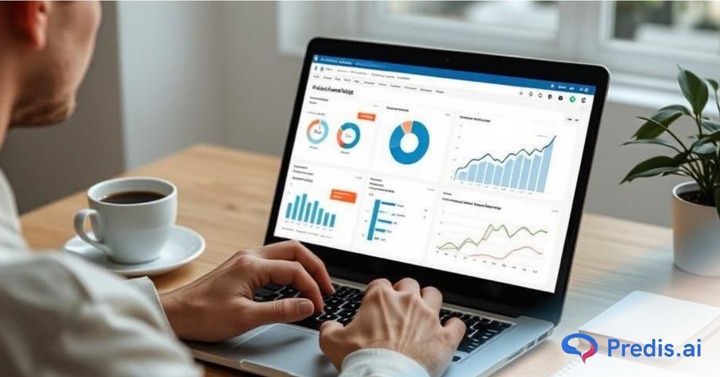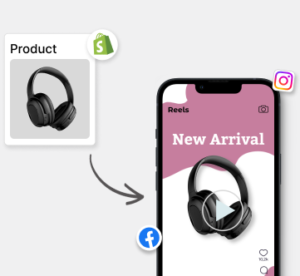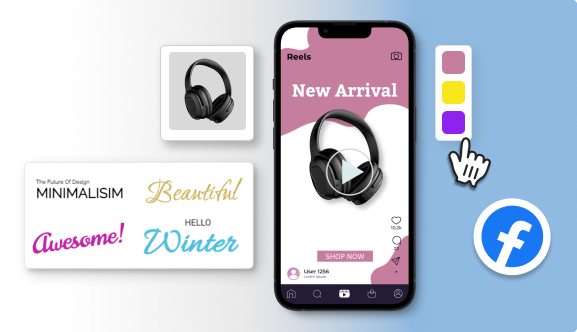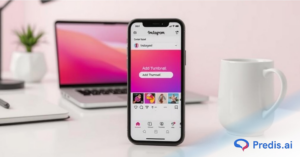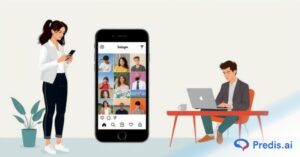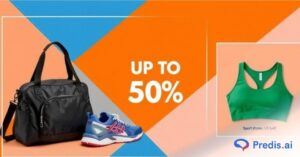E-commerce is a booming field, making the world a place where almost everything is now online. However, it comes with its own set of cons. Sitting at home and scrolling through their phones has made window shopping a lot easier. Often, website visitors simply ‘lurk’ without buying anything. So here are some tips and tricks for you to convert visitors into customers in your Shopify store.
If you’re a Shopify store owner, the most important step for you is to turn your shop visitor into a customer. This is not only about increasing sales but sustaining and growing your online business. This is why, this blog will be starting a fire in your creative mind to use some strategic marketing and convert visitors into customers for your Shopify store!
Understanding Visitor Conversion
Before we get into the strategies to convert your visitors into customers, let’s first take the time to understand what this means. Here, we will take you through two important things- what visitor conversion actually means, and why it is important for you to understand.
What is Visitor Conversion?
In the world of business, visitor conversion is also called conversion rate. This is measured by a percentage and includes visitors of a website who take the action targetted by the website owner. Generally, this action can be signing up for a newsletter, filling out a form, clicking on a blog, etc. For a Shopify store owner like you, this action is making a purchase.
So, to put it simply, visitor conversion is the process of turning your website visitors into paying customers.
Conversion rates are an important metric for any e-commerce business as they directly impact revenue. This is because a higher conversion rate means more visitors are turning customers, and your sales are increasing!
Importance of Visitor Conversion
There are several why visitor conversion or conversion rates are of paramount importance:
- Improving marketing strategies: It helps businesses understand the effectiveness of their marketing strategies. When the numbers are not up to your expectations, you can assess what’s working and what isn’t. This way, you can refine your marketing strategies smartly and direct your efforts in a way that engages your audience.
- Data-driven decision-making: To support a change in marketing strategies, you need real-time data. This data can give you insights into trends, patterns, and the behaviors and preferences of your target audience.
- Potential for growth: As you attempt to try out different marketing strategies, you allow your brand to adapt. In addition to that, you can identify areas of improvement in your website’s design and functionality.
Factors Affecting Visitor Conversion
Visitor conversion, the process of a visitor making a purchase in your online store, can be influenced by a variety of factors. Understanding these factors can help you improve upon them, to ultimately enhance your conversion rate:
- Quality of your products: Your Shopify store can quickly gain some traction based on the quality of the products you offer. Having better quality products can compel your existing customers to leave a review on your site. Which in turn acts as a nudge for your visitors to make a purchase. To woo your visitors through a different medium, make sure to use high-quality and compelling images of your product.
- Pricing of your products: Visitors are more likely to make a purchase when they have clear pricing information and a compelling value proposition, rather than seeing something fishy. A compelling value proposition is all about staking out the pricing for your competitors in the market while providing the best offers to your visitors. Here, make sure to remind your visitor of the quality of your product, making it worth its price!
- Your website design: A user-friendly design is one of the first things that catches a visitor’s eye. An attractive website design although very important, might not mean much if a visitor finds it difficult to navigate, or find a product of related information. A confusing layout can also make a visitor abandon your site without making a purchase. Visually appealing, yet user-friendly websites can enhance customer experience and boost conversion rates.
- Use marketing strategies: To increase conversion rates, you need to make sure you employ every effective play in the book! Effective marketing strategies can drive more traffic to your site and increase conversion rates. One of the most important marketing strategies is having a clear call to action.
What Is a Conversion Path? How To Turn Visitors Into Customers
A conversion path is a journey a visitor takes from first seeing your business to becoming a customer. These are the multiple steps that guide potential buyers through a smooth process and end with them buying. Understanding and optimizing the conversion path will increase your Shopify store’s conversion rate and turn visitors into repeat customers.
What is a Conversion Path?
A conversion path is a series of steps that guide a visitor through the buying funnel. It starts when a visitor lands on your site and ends when they take action, such as buying or signing up for your newsletter. It helps to nurture and engage visitors so that they can make an informed decision.
- Attract: The first step in the conversion path is to attract visitors to your site. This is done through various marketing tactics like social media posts, blog content, paid ads, or SEO. The goal is to drive traffic to your site and make sure the content and message are relevant to your target audience.
- Convert: Once visitors are on your site then the next step is to convert them into leads or customers. This is done through a compelling call-to-action (CTA) that asks them to take the next step. That is signing up for your newsletter, filling out a form, or adding products to their cart.
- Close: The final step is to close. This is where visitors take the desired action – buying or signing up for a service. At this stage make sure the experience is smooth and user friendly so visitors become paying customers.
Elements of Conversion Path
To have a conversion path you need to have the right elements. These are an optimized landing page, a clear CTA, and a well-designed endpoint to capture conversions.
- Landing Page: A landing page is where visitors are sent after clicking on an ad, link, or CTA. It should be about one offer and explain the value of the next step. A good landing page gives visitors the information they need and makes it easy for them to act.
- CTA: A clear call-to-action (CTA) is important to get visitors to take the next step. Whether it’s “Shop Now”, “Sign Up” or “Learn More” the CTA needs to be clear, visible, and persuasive.
- End Point: The endpoint of the conversion path is the final action the visitor will take. This could be buying a product, submitting a form, or scheduling a demo. Make sure the endpoint is simple and easy for visitors to complete.
- Thank You Page: After the conversion is complete, sending visitors to a thank you page is a good way to say thank you. This page can also include additional offers or next steps such as following your brand on social media or subscribing to a newsletter.
How to Create a Successful Conversion Path
Creating a conversion path takes planning and strategy. Each element of the path should work together to get visitors from initial contact to conversion.
- Set Clear Conversion Goals: Before you design your conversion path set clear goals of what you want to achieve. Whether it’s newsletter signups, lead gen or sales having specific goals will help guide your strategy.
- Attract Visitors with Relevant Content: Create high-quality relevant content that attracts your target audience. This could be blog posts, social media content, or ads. Focus on providing value and addressing the needs or pain points of your audience.
- Design Compelling Landing Pages: Your landing pages should be beautiful, easy to use, and offer valuable content that matches your CTA. Make sure your page clearly communicates what the visitor will get by taking the next step.
- Create Engaging CTAs: Design CTAs that stand out and get visitors to act. Use action language and make sure the CTA is prominent on your landing page. The more engaging and clear the CTA the better the conversion.
- Craft an Effective Thank You Page: After conversion send visitors to a thank you page to further engage with your audience. Thank them for their action and give them options to continue to engage with your brand such as following on social media or exploring related products.
- Analyze and Refine Your Conversion Path: Once you have your conversion path set up continually analyze its performance using data and feedback. Find the drop-off points and areas for improvement and refine your approach for better results.
An Example of a Successful Conversion Path
A conversion path can look like this:
- Sponsored Ad: A visitor sees a sponsored ad on Instagram for a sale and clicks on it.
- Landing Page with Pop-Up: The visitor is sent to a landing page with a discount pop-up to enter their email to get 10% off.
- Signup Confirmation: Visitor submits their email and get a confirmation message with a discount code.
- Promotional Follow-up email: Later, the visitor receives a promotional email with a curated list of products, which encourages them to make a purchase.
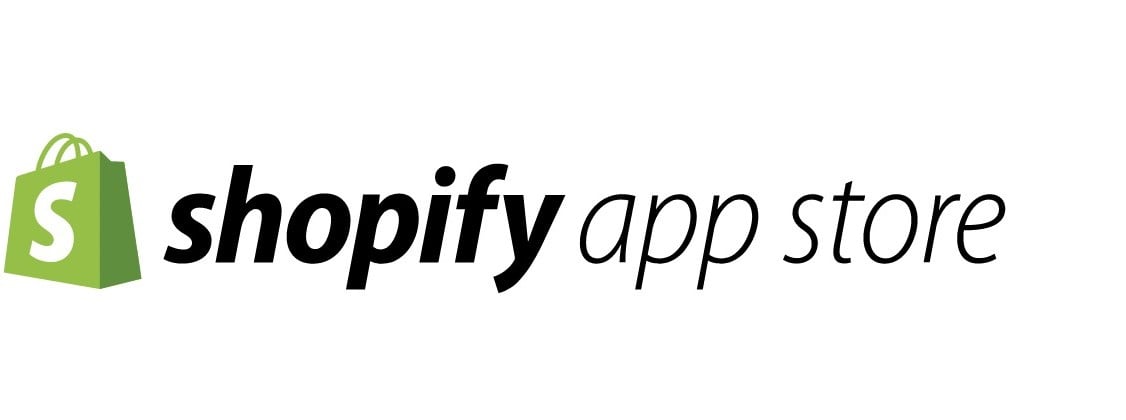
⭐️⭐️⭐️⭐️⭐️
“Great App! Would Recommend to anyone looking to boost their social media posts.”
Strategies to Improve Conversion Rates on Shopify
Now that we have covered the basics, let’s get into making some loyal customers! Below are actionable strategies to help turn visitors into loyal customers and boost your Shopify store’s success.
1. Optimizing Your Online Store’s Appearance
First impressions are crucial when it comes to online shopping. Your store’s appearance and how your products are displayed have a direct impact on whether a visitor will make a purchase.
1) Be creative and craft up an irresistible storefront
First impressions are crucial. To turn a visitor into a customer, you first need to knock them out with your user-friendly and appealing website! Make sure that your website design aligns with your brand identity. For this, use brand colors, colors that you use in your logo. Keep a consistent tone of messaging along with the style of typography.
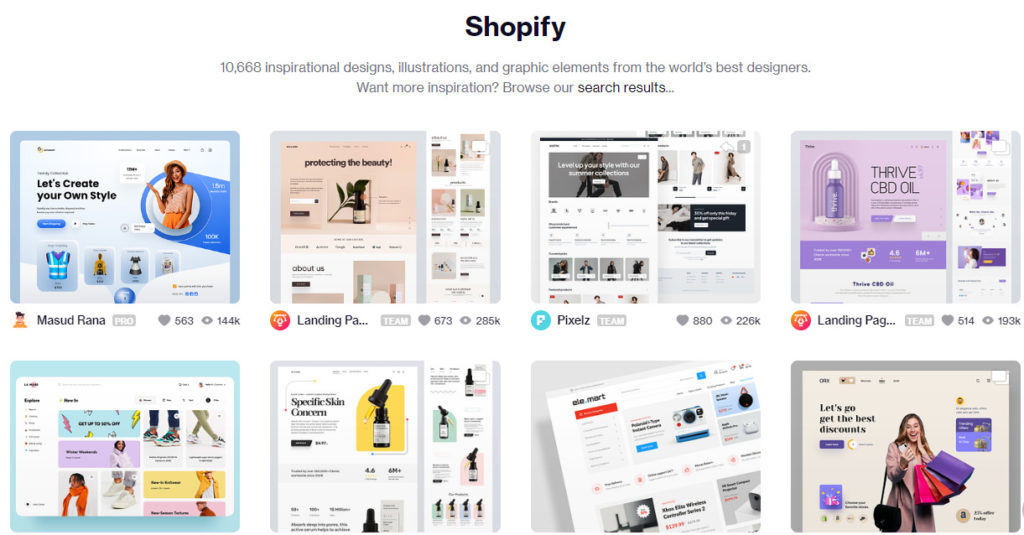
Design inspirations for your Shopify store
A clean navigation setup and intuitive search function can help a significant number of visitors get what they want effectively. This ultimately leads to higher conversion rates.
Pro-tip: Be sure that your website is mobile-friendly since a large number of shoppers use their mobile devices for online shopping.
2) Improve Product Descriptions
Clearly define as many properties of your product as you can. This makes your product seem trustworthy. Your store, in turn, will gain a positive reputation for being thorough and real.
However, this does not mean you can go on to write paragraphs about the product! Be clear, concise, and to the point. Write about the material of the product, its sizes, and dimensions, how to use it, and any benefits or points that suggest durability.
Not only this but using high-quality images and videos can go a long way in winning the hearts of your potential customers. Say you’re showcasing a pretty table. Instead of simply placing it in front of a wall and clicking its picture, try showcasing it in a real-world setting.
This will help your potential customers visualize how they can use your product in their lives when they own it!
3) Use Authentic Images to Build Trust
The images you use in your Shopify store speak volumes about your brand and product quality. Use high-resolution, authentic images that showcase your products from various angles to build trust with your audience. Customers want to visualize how the product will fit into their lives, so realistic images that reflect your brand’s personality help them connect emotionally. Include user-generated photos if possible, as this adds credibility and social proof, making your offerings more relatable.
4) Implement Color Psychology to Influence Buying Decisions
Colors can trigger emotional responses and influence buying decisions. Using the right colors can enhance your brand’s personality and create a stronger connection with customers. For instance, blue conveys trust and professionalism, while red can create a sense of urgency. Create a consistent brand palette and use it throughout your Shopify store to establish a cohesive brand identity. Testing different color combinations for calls to action (CTAs) and product pages can also help determine what drives the most conversions.
First impressions matter – just like that perfect selfie angle!
5) Add Wishlist Feature to Capture Purchase Intent
Not every visitor is ready to buy immediately. A wishlist gives customers the chance to save products they like and come back later. This reduces friction and keeps your products in their minds. Shopify apps like Wishlist Club, the best wishlist app for Shopify, let you add a “Save to Wishlist” button next to “Add to Cart,” encouraging casual visitors to become future buyers.
2. Enhancing User Experience
User experience is key to keeping visitors on your site and moving them through the sales funnel smoothly.
1) Ensure Mobile-Friendliness for a Seamless Experience
A significant portion of online shoppers browse and purchase products using their mobile devices. If your Shopify store isn’t optimized for mobile, you’re likely losing out on potential sales. Make sure your store has a responsive design that works seamlessly on different devices, particularly phones and tablets. Test all pages, from product views to checkout, to ensure everything looks and functions correctly on mobile screens. The smoother the experience, the higher your conversion rate.
2) Improve Website Speed to Reduce Bounce Rates
A slow website can be a big no-no for your visitors. It is one of the main reasons that lead your customers to abandon your site without even checking out your products!
One of the factors that decide the speed of your websites is the size of your images. Large images can significantly slow down your website. In that case, consider compressing the file size without compromising on the quality. As we know, quality images reel in customers!
Another point to look out for is the use of unnecessary plugins. They make your website complex and increase its loading time. Remember to use only essential plugins or add-ons.
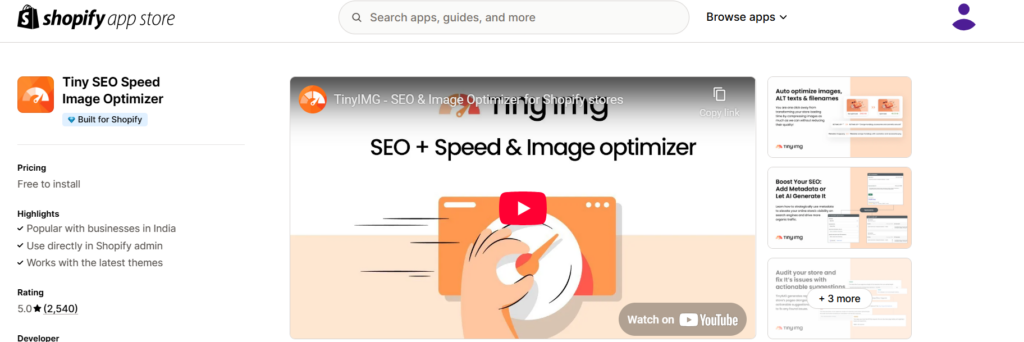
3) Use Shopify Tools
You can also make use of Shopify tools to help you improve your website speed. Shopify’s online store speed report is an integrated tool that can analyze your store’s performance. It also provides you with some recommendations to improve speed. Another Shopify app called ‘Tiny: SEO‘ can help you size your images and optimize them to complement the store loading speed as well as improve your SEO rankings.
Let’s face it, no one likes a slow-loading website – it’s the digital equivalent of waiting in line at the DMV.
3. Streamlining Navigation and Checkout
A smooth and easy-to-navigate website ensures visitors can quickly find the products they need.
1) Simple and Intuitive Navigation for Easy Browsing
Your Shopify store’s navigation should be clear and intuitive, allowing customers to find what they’re looking for without any hassle. Organize your products into logical categories and subcategories, and make sure your search bar is easy to locate and functional. The easier it is for customers to browse through your site, the more likely they’ll stay and explore, increasing the chance of a purchase.
2) Remove Friction by Reducing Steps in the Checkout Process
A lengthy or complicated checkout process can lead to cart abandonment. Reduce the number of steps it takes for customers to complete a purchase. Use a progress bar to show them how far along they are in the process, and remove any unnecessary fields. Offering a guest checkout option is also a great way to streamline the process, as not all customers want to create an account. A simplified checkout increases the chances of converting a visitor into a paying customer.
3) Offer Multiple Payment Options
Making the customer go through right when they’re about to check out can lead to cart abandonment. Minimize the number of steps they go through and offer multiple payment options. Shopify supports a variety of payment gateways, including credit cards, PayPal, and Apple Pay.
Offering flexible payment plans or financing options can also help boost conversions. These factors might seem negligible, but can significantly improve the checkout experience and increase conversions.
4. Use Social Proof to Build Trust and Credibility
Building trust is essential for encouraging visitors to make a purchase, especially when shopping online.
A never-to-be-missed ritual before buying any online product is to check its reviews. One of the most crucial points in converting a visitor into a customer is when the visitor checks reviews for your products.

A positive review or testimonial can help prove your credibility as a quality store and can quickly influence a visitor’s decision to make a purchase.
If you think some visitors might not take the effort to scroll lower and check out the reviews, Shopify now allows you to easily integrate customer reviews into your product pages!
1) Leverage Customer Testimonials and Reviews to Build Trust
Positive reviews and testimonials can significantly influence purchasing decisions. Display customer reviews prominently on product pages to reassure potential buyers of the quality and value of your products. Verified customer feedback acts as social proof and helps build credibility. When visitors see that others have had positive experiences, they are more likely to trust your store and complete their purchase.
2) Showcase User-Generated Content to Increase Social Proof
Encourage your customers to share photos of themselves using your products and display this user-generated content on your product pages and social media channels. This builds trust and gives potential buyers a sense of how your products look and perform in real life. A strong presence of user-generated content creates social proof, making your Shopify store more relatable and trustworthy.
Boost Shopify Sales with Social Media 🤩
MAKE POSTS WITH AI5. Effective Calls-to-Action (CTAs)
A good CTA can make all the difference. Use clear, compelling language and contrasting colors to draw attention to your CTAs.
1) Use Contrasting Colours for CTAs to Grab Attention
Make your CTAs pop by using bright contrasting colours. Use colors that match your website but stand out from the rest of the content. An eye-catching CTA button will grab attention, and actionable language like “Buy Now” or “Get Yours Today” will prompt action.
2) Create Urgency to Act Now
Creating urgency is a great way to get visitors to act fast. Use phrases like “Limited Time Offer” or “Only a few left in stock” to create scarcity, so visitors buy before it’s too late. Urgency will help visitors overcome hesitation and buy.
6. Offering Incentives and Rewards
Incentives will convert visitors, and rewards will bring them back.
1) Offer Competitive Pricing
As we’ve said before, offer your visitors the best prices, while reminding them of the quality you uphold for every product. Remember to research your competitors’ pricing strategies and price your products competitively.
2) Discounts and Promotions to Drive Sales
Discounts and promotions are great tools to drive sales and get visitors. First-time customer discounts, seasonal promotions, or coupon codes will get visitors to take the plunge and buy. Time-limited offers create urgency and convert.
3) Free Shipping and Free Returns to Reduce Friction
One of the main reasons customers abandon carts is the surprise of shipping costs. Free shipping especially on orders above a certain amount will get customers to spend more. Free returns give customers peace of mind so they don’t feel the risk of buying. Both will increase customer satisfaction and conversion.
Who doesn’t love a good deal? Offering incentives is like handing out free cookies – everyone’s in!
7. Providing Excellent Customer Service
Great customer support can make the difference between a lost sale and a loyal customer.
Let’s say your website visitor has a query that needs to be answered before they make the decision to purchase a product. In that case, having an accessible and responsive customer support service — even something as simple as an AI receptionist that can handle FAQs and route queries instantly — can hit the final nail in their decision-making process.
A pleasant resolution to their questions or issues can quickly build trust with the visitors, turning them into customers. Not only that, but it helps turn first-time customers into loyal customers!
1) Live Chat for Immediate Support and Feedback
A great idea to implement this is a tactic that Predis.ai used- the live chat feature that you can use for your website. This allows customers to get immediate help when they need it.
A live chat feature on your Shopify store can help visitors get immediate answers to their questions or concerns. This real-time support allows customers to overcome any last-minute hesitation and proceed with their purchase. Quick, helpful responses can also leave a positive impression, increasing the likelihood of return visits and purchases.
Pro Tip: Consider using chatbots for instant replies to the most common queries. This will come in handy, especially outside of regular business hours.
2) Comprehensive FAQ Section for Easy Answers
A well-organized FAQ section can address common customer concerns, such as shipping policies, product returns, and payment options. This helps visitors find the information they need without having to wait for customer support, reducing friction and improving the overall shopping experience.
8. Analyzing and Improving Performance
You need to be analyzing your store regularly to optimize conversion rates. Use data from tools like Google Analytics or Shopify’s built-in reports to track key performance metrics. By identifying what’s working and what’s not, you can make data-driven adjustments to improve your store’s overall performance.
1) Use Data to Identify Areas for Improvement
Track website traffic, conversion rates, and cart abandonment rates to find weaknesses in your Shopify store. Analytics tools will give you insights into visitor behavior and preferences so you can find areas to improve. Using data to make decisions means you’re making changes that will benefit your store.
2) A/B Testing to Optimize Your Store’s Performance
A/B testing is about trying different versions of your site’s elements to see what works best. Try different CTAs, product images, layouts, and more to see which one converts best. Continuous testing means you can hone your store’s design and functionality and convert more.
9. Maximizing Potential Customers
Identifying and targeting high-value customers can boost both conversions and long-term growth. Focusing on the right audience ensures that your resources are spent where they have the most impact.
1) Identify and Target High-Value Customer Segments
Use customer data to identify your most valuable customer segments. These are the customers who are most likely to make repeat purchases or spend more on your products. By targeting these segments with personalized content, promotions, and offers, you can maximize their potential and increase conversions.
2) Personalize the Shopping Experience for Increased Conversions
Personalization is key to providing a memorable shopping experience. Use data to offer personalized product recommendations, tailor promotions based on customer behavior, and create customized content. By making your customers feel valued, you increase the likelihood of them making a purchase and becoming repeat buyers.
10. Reach New Audiences
Driving traffic to your Shopify store is essential for increasing visibility and conversions. These tactics will help bring more visitors to your site. Reaching new audiences broadens your customer base and increases your chances of converting new visitors into paying customers.
1) Email Marketing
As visitors land on your page, try and direct them to sign up for a newsletter or email reminders. This helps you stay in touch with visitors who either did not complete making a purchase, or previous customers. Regularly send out newsletters to your email list. Provide posters or brochures about new products, sales, and other relevant information.
Another target for email marketing is to reach out to those who abandoned their cart without making a purchase. This can encourage them to come back and complete the purchase.
2) Social Media Marketing
A strong social media presence is a must for any online store. Make sure to use different social media platforms like Facebook, Instagram, and even Pinterest! Post regularly on your social media platforms. Engage with your followers by responding to their comments and messages.
To widen your reach, host giveaways and contests, post quizzes, and take questions using the Instagram Story feature. Another way to reach a whole new audience through a trusted medium is to collaborate with influencers in your niche. They can help promote your products to their followers.
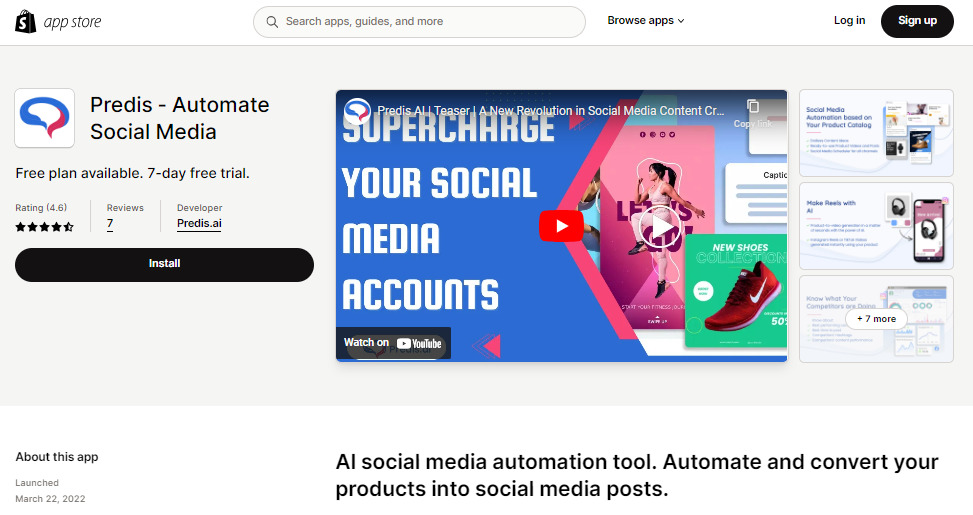
Use a tool like Predis.ai to generate content from your Shopify products.
Running ads on social media platforms is a great way to attract targeted traffic.
Facebook ads allow you to target users based on demographics, interests, and behavior. Instagram ads are highly visual and ideal for promoting products to younger audiences. Pinterest ads can be highly effective for reaching users looking for inspiration or products. Use Google Ads to appear in search results when users are looking for relevant products. TikTok ads are growing in popularity, offering an opportunity to reach a younger, engaged audience.
Engaging with your audience on social media can help build relationships and increase brand awareness. Encourage friends and family to share your store’s posts to reach new audiences. Respond to comments and engage with followers to foster community and trust. Share your store on relevant Reddit communities to tap into niche markets.
3) Influencer Marketing
Influencer marketing is a powerful way to reach new customers. Collaborate with influencers by sending them free product samples in exchange for reviews or shoutouts. Contact bloggers and press outlets to feature your brand in relevant content.
Create blog content that highlights influencer advice and ties it back to your products.
4) Content Marketing
Content marketing helps establish your authority and attract organic traffic. Create informative blog posts that address customer pain points or provide valuable information. Identify your ideal audience by understanding their needs and tailoring content to them.
Write engaging, informative, and visually appealing content that resonates with your audience. Podcasts allow you to share your expertise and reach a new demographic of listeners. Create educational or entertaining videos to engage visitors and drive traffic.
SEO helps increase your store’s visibility on search engines and many businesses even rely on white label SEO services for agencies to streamline these efforts. Ensure your title tags match the user’s search intent to improve rankings. Create compelling meta descriptions to entice users to click through to your site. Improve navigation and SEO by adding internal links to important pages on your website. Target long-tail keywords to attract more specific, high-intent traffic. Use rich snippets to enhance your search results and stand out from competitors.
Bringing traffic to your Shopify store is like throwing a party – you want everyone to show up, and these strategies will ensure they do!
Understand Conversion Rate
Your Shopify store’s success is all about converting visitors into paying customers. This is a complex process and understanding the conversion rate is key to improving your store.
What is the Conversion Rate and Why is it Important?
The conversion rate is the percentage of website visitors who take a specific action, such as buying, subscribing to a newsletter, or filling out a form. For Shopify store owners this is usually about turning visitors into buyers. A high conversion rate means your store is convincing visitors to take action and that’s more revenue for you. A low conversion rate means there’s an issue with your website.
Understanding and tracking your conversion rate lets you know what’s working on your site and what’s not. It also helps you optimize your marketing, which means more sales and growth.
Average Conversion Rate for Shopify Stores
Conversion rates vary by industry and market but for Shopify stores, the average conversion rate is between 1.5% to 2%. If you’re above 3.2% you’re in the top 20% of Shopify stores, above 5% you’re in the top 10%. That’s the benchmark to shoot for, which means your store is optimized for converting visitors into customers.
Wrapping up
To sustain and grow your online store, visitor conversion is a crucial step. However, just like Rome wasn’t built in a day, converting visitors into customers is not an overnight process. It requires a combination of effective marketing strategies, excellent customer service, and a user-friendly website design. By implementing these strategies, you can increase your conversion rate and boost your Shopify store’s sales.
Conversion Path FAQs
1) What is a Conversion Path?
A conversion path is the path a visitor takes to become a customer. It’s multiple touchpoints that lead to an action (buy or form fill).
2) What are the Steps to Create a Conversion Path?
Attract with content, convert with CTAs and landing pages, and close with an easy final step.
3) What is a Good Conversion Path?
User-friendly, persuasive, and customer-centric with a clear CTA, easy landing page, and smooth final step.
How to Drive Traffic to Your Website FAQs
1) How Do I Bring More Traffic to My Website?
Use a combination of content marketing, SEO, social media ads, and influencer collaborations.
2) How Can I Drive Traffic to My Website for Free?
Leverage organic social media posts, SEO, and guest blogging.
3) How Do I Drive Organic Traffic to My Website?
Focus on SEO, blogging, and building backlinks.
4) How Do I Get Traffic to My Website Fast?
Use paid ads on social media and search engines for quick traffic boosts.
General FAQs
1) How Do You Turn Store Visitors Into Customers?
Engage visitors with compelling content, a clear CTA, and a user-friendly shopping experience.
2) How to Convert Website Visitors Into New and Returning Customers?
Use personalized content, retargeting ads, and follow-up emails to convert visitors into loyal customers.
3) How to Convert Website Visits to Sales?
Optimize your product pages, simplify checkout, and offer incentives like free shipping.
4) What Is the Conversion Rate for Shopify Visitors?
The average conversion rate for Shopify stores is around 1.5-2%, with top-performing stores achieving above 3%.

⭐️⭐️⭐️⭐️⭐️
“Great App! Would Recommend to anyone looking to boost their social media posts.”
Related articles
Best Instagram Tools to Boost Shopify Sales
Social Media Graphics Tools for Shopify
How to use ‘Add to Cart’ in Pinterest?
ChatGPT for Shopify and Ecommerce Marketing


